Porcupinefish
Family Diodontidae
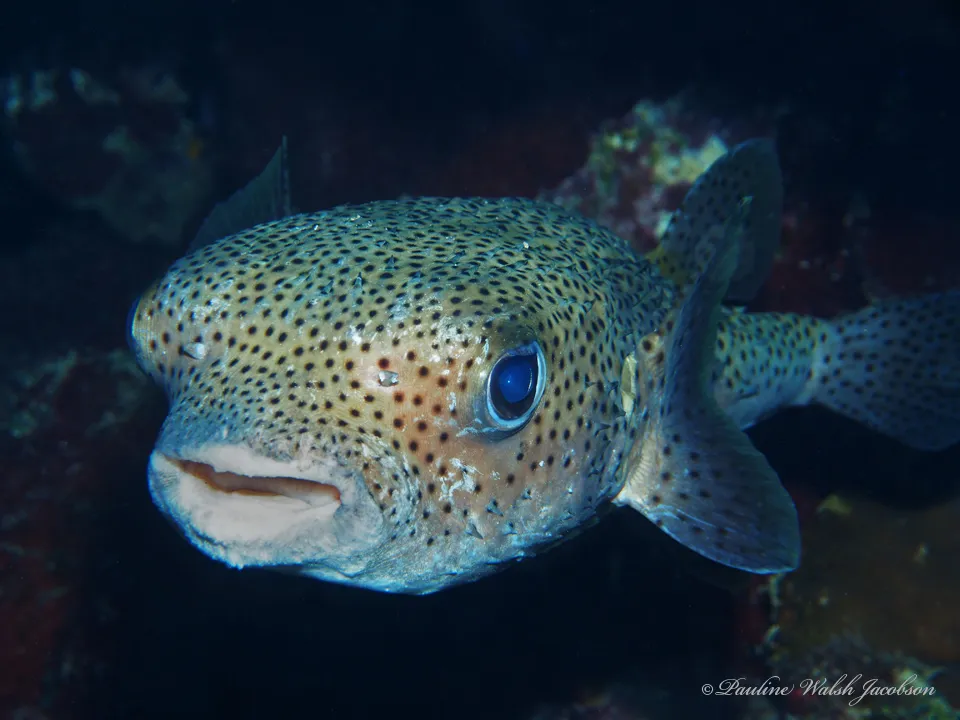
Photo by Pauline Walsh Jacobson / CC BY 4.0 via Wikimedia Commons
Porcupinefish (Diodontidae) are the "spiky balloons" of the sea. Often confused with pufferfish, they have a secret weapon: long, sharp spines that cover their body. Normally, these spines lie flat, making the fish look like a cute, wide-eyed puppy. But when threatened, they swallow water to inflate into a prickly sphere, turning from a snack into an unswallowable pincushion. With their big, soulful eyes and permanent "smile" (thanks to their beak-like teeth), they are among the most charismatic and recognizable reef inhabitants.
🔬Classification
📏Physical Features
🌊Habitat Info
⚠️Safety & Conservation
Identification Guide

Photo by Pauline Walsh Jacobson / CC BY 4.0 via Wikimedia Commons
Field marks:
- Spines: Body covered in visible spines (modified scales). Even when not inflated, you can see the "quills" lying flat.
- Big Eyes: Disproportionately large, round eyes giving them a "puppy-dog" look.
- Mouth: Broad mouth with heavy, fused teeth forming a crushing beak (upper and lower plates).
- Shape: Robust, oblong body; lacks pelvic fins.
Differences from Similar Species
- Pufferfish (Tetraodontidae): Have smooth skin or tiny prickles that only show when inflated; porcupinefish have long, visible spines always.
- Burrfish (Chilomycterus): A type of porcupinefish where spines are fixed erect (always standing up); true porcupinefish (Diodon) have movable spines that lie flat until inflated.
- Boxfish: Rigid, boxy body with no spines (unless it's a cowfish with horns); porcupinefish are fleshy and inflatable.
Juvenile vs. Adult
Juveniles are often pelagic, drifting in the open ocean with floating weeds. They are tiny, perfect spheres with spots. Adults are benthic, resting on reefs during the day.
Top 10 Fun Facts about Porcupinefish
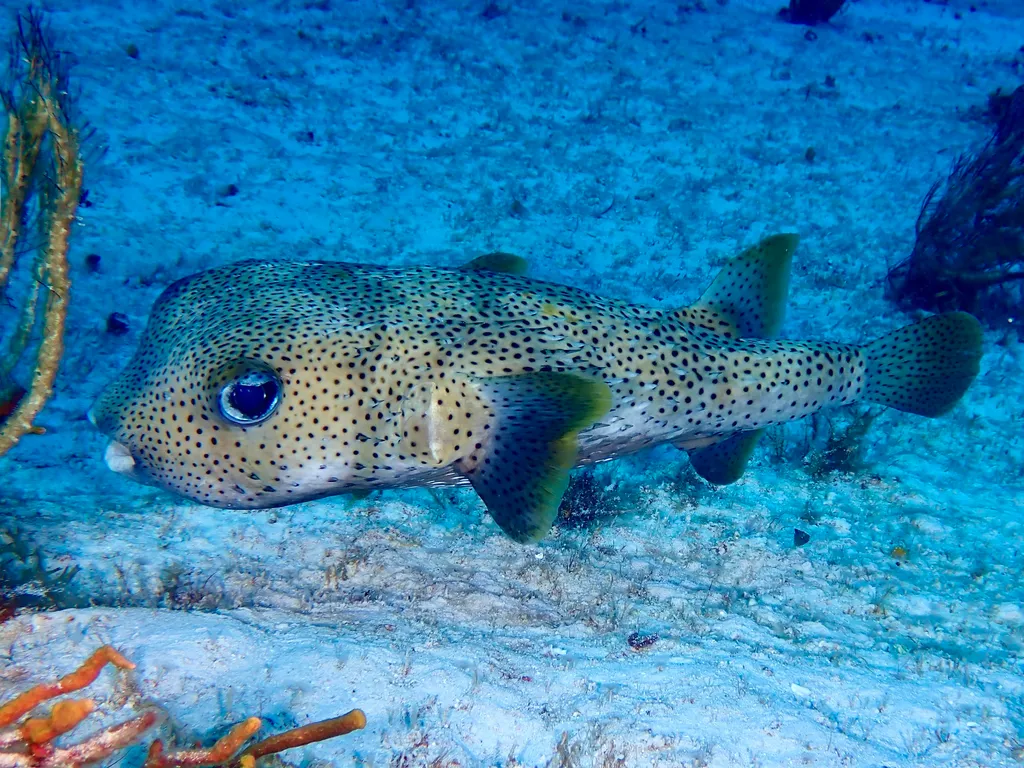
Photo by Chris Spain / CC0 via Wikimedia Commons
1. The "Hedgehog" of the Sea
The name "Porcupinefish" isn't subtle. Their body is covered in spines that are actually modified scales. In the genus Diodon, these spines are movable. Normally they lie flat for aerodynamics (well, hydrodynamics), but when the fish puffs up, they stand straight out. It’s like carrying a folding spear wall on your back.
2. Water Balloon Defense
When a predator attacks, the porcupinefish doesn't swim away (it’s too slow for that). Instead, it gulps down huge amounts of water (or air if pulled out) into its highly elastic stomach. It can triple its size in seconds. Imagine trying to swallow a beach ball wrapped in barbed wire—that's the experience for a predator.
3. The "Smile" That Crushes
They always look like they are smiling, but that mouth is a hydraulic press. Their teeth are fused into two solid plates (one upper, one lower) that form a powerful beak. This allows them to crush the hardest shells of sea urchins, crabs, and snails. If you value your fingers, never hand-feed a porcupinefish.
4. Big-Eyed Night Owls
Those massive, soulful eyes aren't just for looking cute. Porcupinefish are primarily nocturnal hunters. The large eyes help them gather maximum light to spot crunchy invertebrates in the dark. During the day, they are the sleepyheads of the reef, often found napping under ledges.
5. Toxic Inside and Out
If the spines don't deter a predator, the chemical warfare might. Many porcupinefish accumulate tetrodotoxin (the same deadly neurotoxin found in pufferfish) in their internal organs. Some sources suggest their skin secretions can also be toxic. It’s a "do not eat" label written in biology.
6. Pelagic Wanderers
Before they settle down on a reef, juvenile porcupinefish spend a long time drifting in the open ocean. They form schools and hide under floating mats of sargassum weed. This pelagic stage allows them to disperse across vast distances, which is why you find the same species (like Diodon holocanthus) all over the world.
7. Darwin's Fascination
Even Charles Darwin was impressed. In his journals, he described a porcupinefish he caught, noting how it could inflate and even "bite" his finger hard. He was fascinated by how the skin on its belly was loose and folded to allow for such extreme expansion.
8. No Pelvic Fins? No Problem.
Like their cousins the pufferfish, porcupinefish have completely lost their pelvic fins. They don't need them. They maneuver using their pectoral, dorsal, and anal fins. It’s a clumsy, hovering style of swimming, but it gives them great precision for maneuvering into tight caves.
9. The "Burrfish" Cousin
Not all porcupinefish can fold their spines. The "Burrfish" (genus Chilomycterus) have shorter, triangular spines that are permanently locked in an upright position. They are like the tank version—always armored, always ready, but less "transformable" than the classic porcupinefish.
10. Intelligent and Curious
Divers often report that porcupinefish seem "smarter" than the average fish. In captivity, they quickly learn to recognize their keepers and will spit water at the surface to beg for food. In the wild, they will often turn to watch a diver with both eyes, displaying a level of curiosity that feels surprisingly mutual.
Diving & Observation Notes
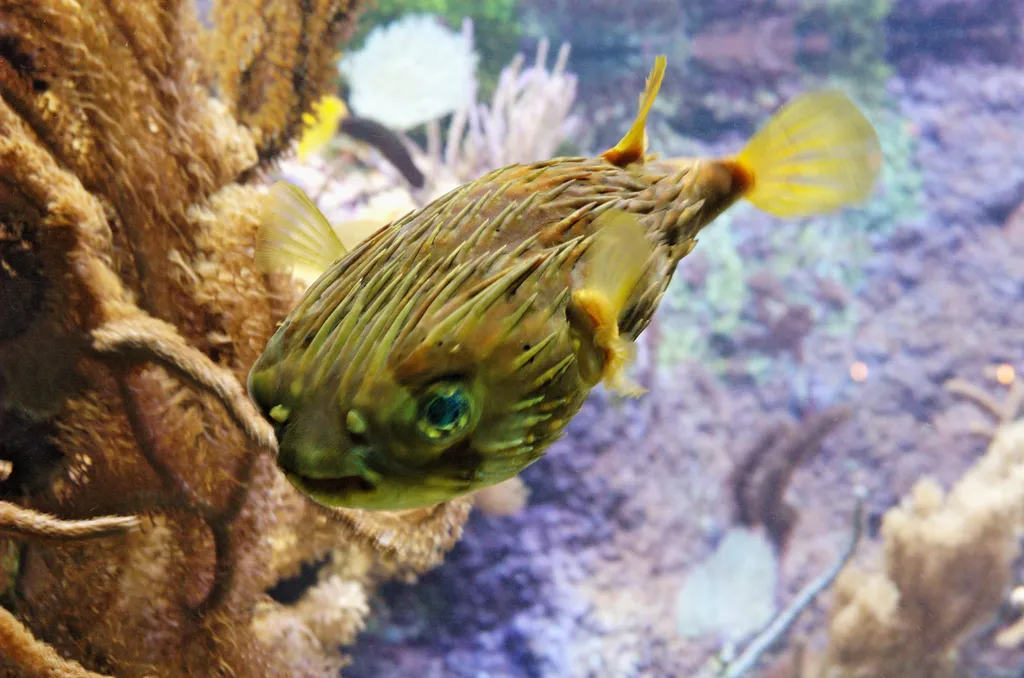
Photo by Gary Houston / CC0 via Wikimedia Commons
🧭 Finding Porcupinefish
During the day, check under ledges, in small caves, and deep crevices. They are often sleeping, sometimes piled on top of each other like puppies. At night, they are out in the open, hunting over the reef or sandy bottoms. Look for the big eyes reflecting your dive light.
🤿 Approach & Behavior
- Do Not Harass: The most important rule: NEVER provoke a porcupinefish to make it puff up. Inflating is extremely stressful and can be fatal (if they swallow air, they might not be able to submerge again; repeated inflation weakens their immune system).
- Slow Approach: They are generally calm but shy. Approach slowly from the side. If they turn their back, stop.
- Night Dives: This is the best time to see them active. Keep your light beam indirect to avoid blinding them, and watch them crunch on crabs.
📸 Photo Tips
- Face-On Portrait: Their wide face and big eyes make for adorable portraits. Get low and shoot slightly upward.
- The "Smile": Try to capture the open mouth "smile".
- Sleeping Piles: During the day, finding two or three huddled together in a hole makes for a great "cuddle puddle" shot.
⚠️ Ethics & Safety
- NO PUFFING: I repeat, do not chase, grab, or poke them to see them inflate. It is animal abuse. A puffed fish is a terrified fish fighting for its life.
- Watch the Teeth: They have a powerful bite. Keep fingers and camera cables away from their mouth.
🌏 Local Guide Nuggets
- Thailand (Similan/Richelieu): Huge schools of porcupinefish can sometimes be seen, which is a rare and spectacular sight.
- Caribbean: The Balloonfish (a type of porcupinefish with long brow tentacles) is common and very photogenic.
- Galapagos: Large schools are often seen here, sometimes mixing with other species.
Best Places to Dive with Porcupinefish
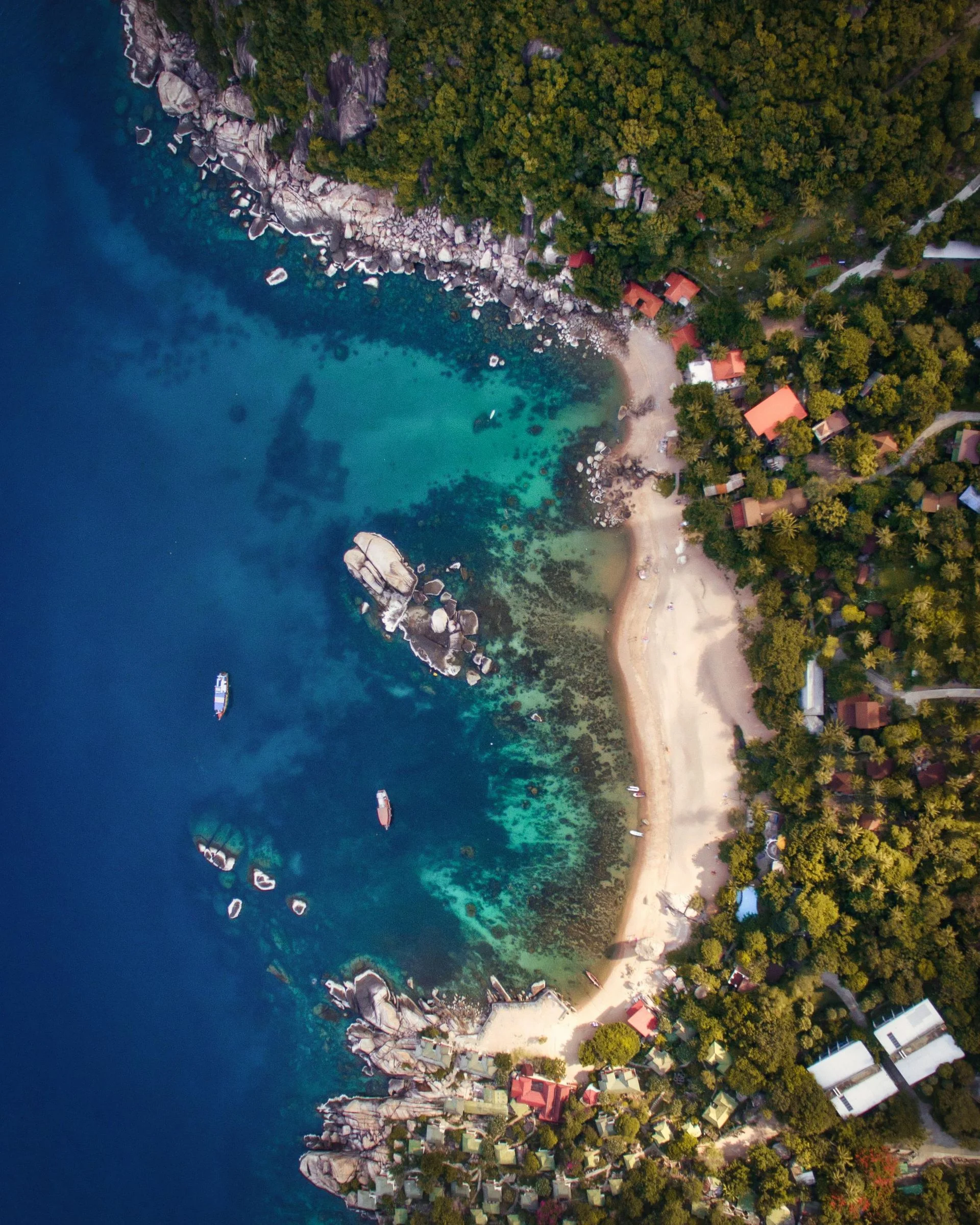
Koh Tao
Koh Tao — literally “Turtle Island” — is a compact jewel in the Gulf of Thailand that has become Asia’s mecca for learning to dive. Its sheltered bays and offshore pinnacles host a surprising variety of marine life: coral gardens alive with parrotfish and angelfish, rocky domes where barracuda and trevally swirl, and the occasional whale shark gliding in from the blue. Warm, clear water and a laid‑back island vibe make it ideal for beginners, but seasoned divers will still find thrills at deeper sites like Chumphon and Southwest Pinnacles.
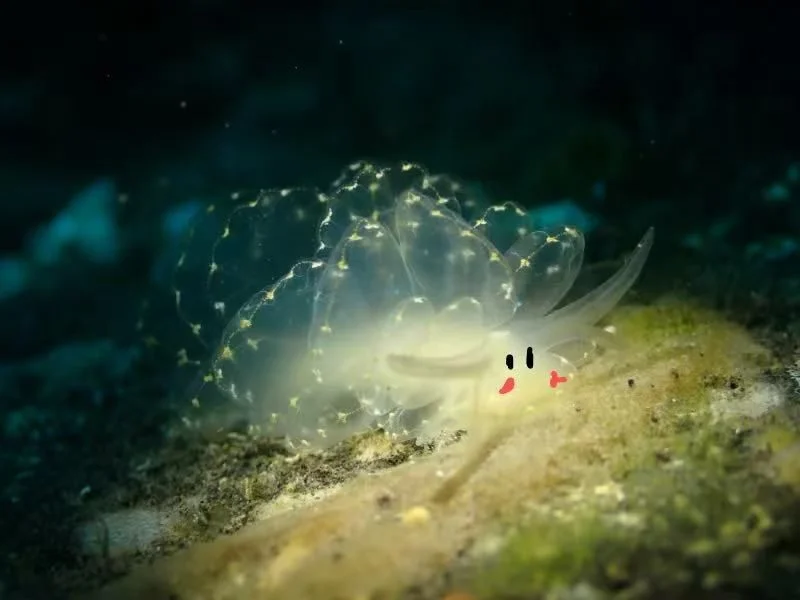
Tulamben(Bali)
Tulamben sits on Bali’s northeast coast and is best known for the USAT Liberty shipwreck – a 125‑metre cargo ship torpedoed in WWII that now lies just a short swim from shore. Warm water, mild currents and straightforward shore entries make diving here relaxed for all levels. Besides the wreck, divers can explore coral gardens, black‑sand muck sites and dramatic drop‑offs. Macro lovers will find nudibranchs, ghost pipefish, mimic octopus and pygmy seahorses, while big‑fish fans can encounter schooling jackfish, bumphead parrotfish and reef sharks. With a compact coastline packed with variety, Tulamben delivers world‑class wreck and critter diving without long boat rides.
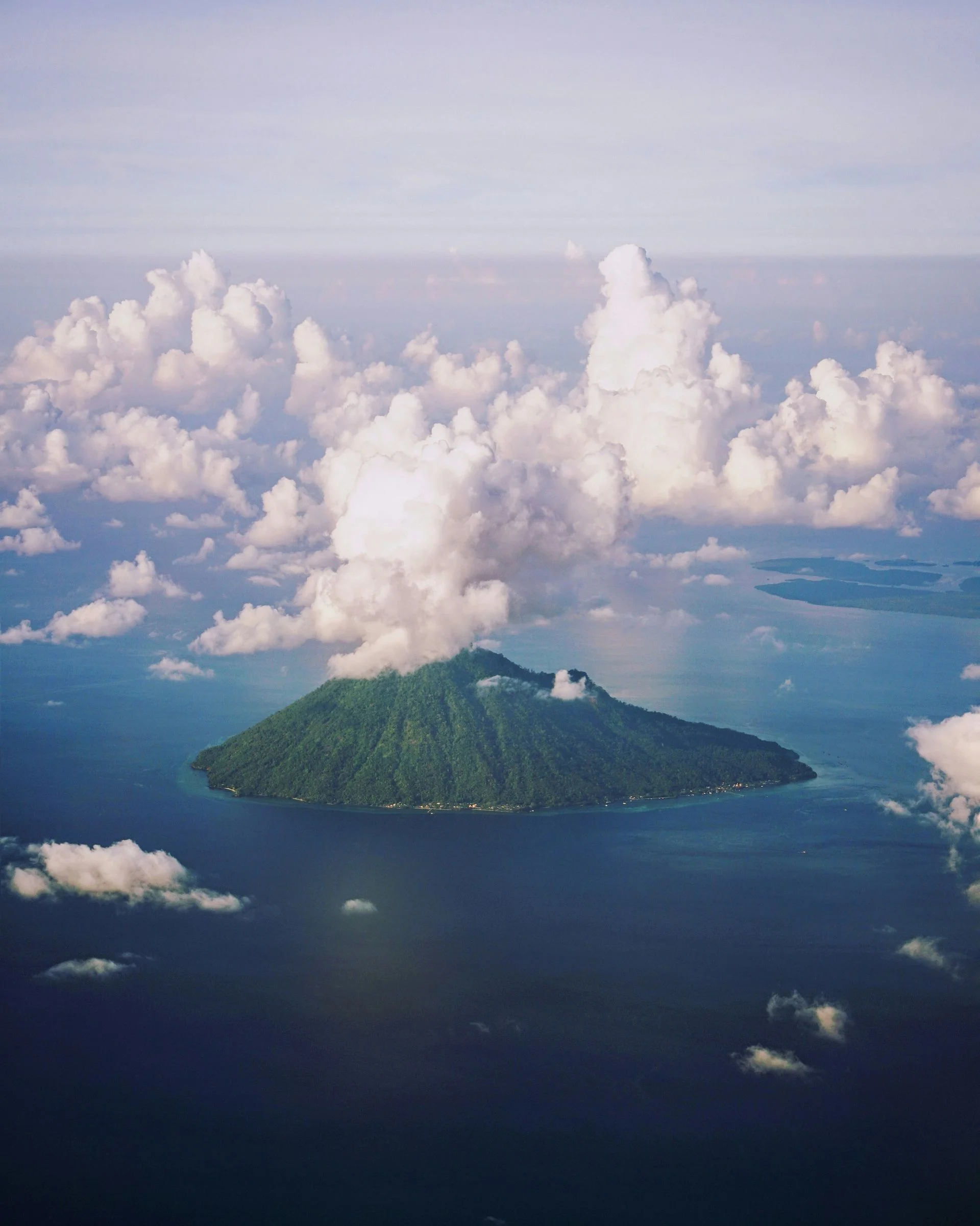
Manado
Tucked away in northern Sulawesi, Manado’s coastal waters and Bunaken National Park are a diver’s dream. Sheer coral walls plunge into the deep blue, exploding with sponges, sea fans and tropical fish, while the mainland coast hides muck‑diving gems with seahorses, ghost pipefish and mimic octopus. Dolphins and pilot whales sometimes cruise past, green turtles nap on the reef, and reef sharks and schooling jacks patrol the drop‑offs. Whether you like effortless drift dives along walls or critter hunting in sand and seagrass, Manado balances big‑fish thrills with macro treasures. Warm waters, friendly locals and laid‑back resorts make it perfect for both serious underwater photographers and casual holidaymakers.